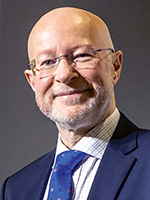Features Articles

Returning to normal is bringing new and familiar obstacles.
As I look back on 2022, I’m thankful for the return to normalcy I’ve seen. That said, this normal has new and continuing challenges for the electronics manufacturing services (EMS) industry. Here are a few that I see and some tips on better preparing for them.
So-called “labs-on-a-chip” are leading a testing revolution.

It’s well known that the world’s healthcare needs are increasing as the population is aging. The proportion of the world’s population over 60 years old is projected to rise from around 10% today to 16% by 2040. With this aging, the types of required treatments are also expected to change. Instances of cancer, for example, are expected to increase 47% by 2040.
How lesser-known printer software features can improve process control.

As a process engineer specializing in the stencil printing operation, I understand why many operators are unaware of the bells and whistles in advanced printing platform software – especially when working in a busy production environment. While the primary focus is speed, pressure and angle to ensure the best print at the fastest cycle time cadence, sometimes the production pace can be interrupted by unexpected events. I was reminded of this – and a couple of software tricks – recently when doing evaluation work in our lab.
While 5G has only shown a fraction of its potential, will the world ever be ready for the next generation?

Much of the world seems to have changed beyond recognition since the pandemic began. With numerous economic and environmental uncertainties, however, one thing remains constant: our appetite for what comes next – and our impatience – are undiminished. The rollout of 5G cellular networks has barely begun – after a huge development effort to define the standards and do the engineering – yet, already, excitement is building around 6G. The first standardization phase for this will begin in 2023 and services should be available around 2030.
Widespread critical staffing needs call for a cross-industry effort to promote manufacturing.

With this time of year come many opportunities to attend industry gatherings, catch up with industry colleagues, and find out what’s happening in the macro circuit board supply chain. Over the past couple months, I have seen many old friends. And, I have had more than a few opportunities to reflect on our industry, the state of the supply chain, and what is “critical” versus just “important.”
Teams are overworked and on the edge. How to combat the slide.

One of my favorite bosses pointed out that a contract is only as good as the intent of the parties who sign it. Yes, you can haul a party in breach of contract into court or arbitration, but the resolution rarely completely fixes the issue, and in many cases parties breach agreements with no consequences. Nowhere is that more evident than in today’s semiconductor industry. You’ll get parts when they arrive even when there was a commitment for an earlier date; they may cost more than the agreed-upon price; and the order is noncancellable regardless of how many previously agreed-upon terms change. In short, one party has no intent to adhere to the terms of its agreements, and market conditions will likely enable that behavior to continue indefinitely with no consequences.
This type of environment can be as contagious as the most recent Covid variant. Customer service and honoring commitments are sliding across the board. Last month, I listened to a gate agent lecture a 6 a.m. flyer who foolishly thought she could get to her destination in a single day, saying the airline wasn’t obligated to put her on a different airline until she had been stuck in transit for 48 hours. Separately, three contractors I called for glass cutting informed me that they couldn’t commit to a time for quoting or delivery but would a call an hour before they arrived. One finally did call back a week later and got the job. The other two still haven’t called back. When all competitors in a market are getting away with behaving badly, mediocrity thrives.
Press Releases
- BTU International Announces Strategic Manufacturing Expansion in Singapore to Strengthen Global Supply Chain
- StenTech Strengthens Precision Parts Platform with AME Acquisition
- Count On Tools Enhances Selective Soldering Precision with Expanded Nozzle Lineup
- ViTrox Presents Advanced Inspection and Smart Manufacturing Solutions at NEPCON Asia 2025


